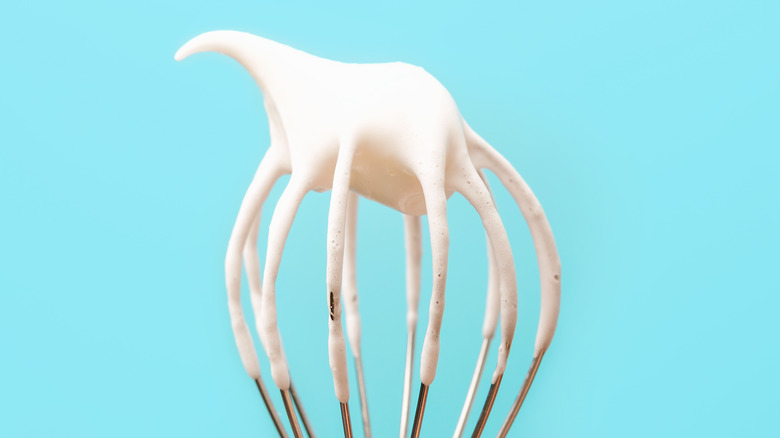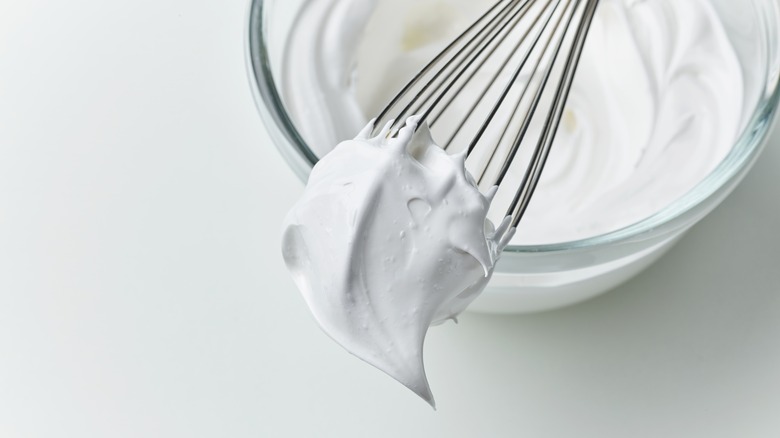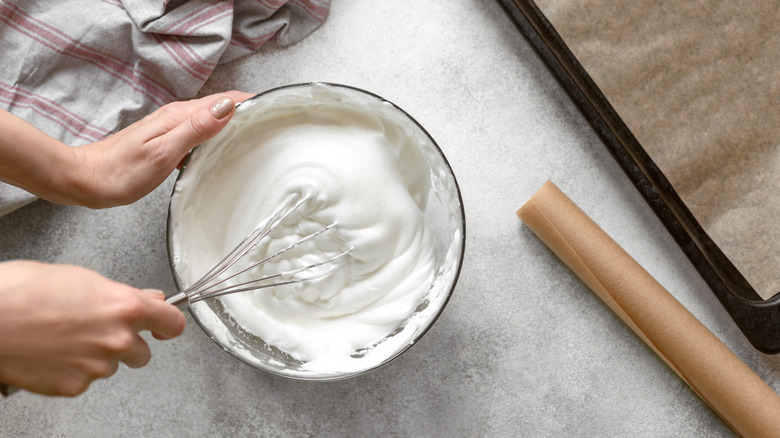Recipe Calls For A Cold Whisk? Here Is What That Means
If you've spent any amount of time in the kitchen, you've probably run into a recipe that calls for an unfamiliar or interesting ingredient, such as adding zucchini to a boxed cake mix. Sometimes, recipes call for very specific cooking tools as well. It can be tempting to skip past these specific instructions in an attempt to make a recipe quicker or easier, but for best results, it's important to follow recipes closely, even if they call for something seemingly unexpected — like a cold whisk.
When a recipe calls for a cold whisk, you need to do exactly what it sounds like — i.e. chill your whisk before using it to mix up the ingredients. It can often be helpful to chill other kitchen tools as well, such as your bowl and spoon. Many times, a cold whisk is used in whipped cream recipes because it can help the whipped cream stay cool and become firm.
What is cold whisk in a recipe?
A cold whisk is kept chilled right up until you're ready to use it. Cold utensils and mixing bowls are important for whipped creams and any recipe that requires you to whip dairy products. When you make whipped cream, the fat in the cream solidifies as it gets cold. When you whip the cream with a whisk, you trap air bubbles between that solidified fat. This is what gives it that firm texture, and it's why whipped cream melts when it gets warm. Using a cold whisk and even a cold metal mixing bowl can help keep your already cold cream at a cold temperature as you whisk it so it's able to get firm. Starting with a cold whisk can help counteract any heat that forms due to friction while mixing or from the room temperature of your kitchen.
Though meringues and pavlovas are similar to whipped cream in that they get firm as you mix them, it's actually not a good idea to use a cold whisk for these recipes. The base of a meringue is egg whites rather than cream, and they require the protein in the egg to break down and bond with air pockets as you whisk. This is much faster to accomplish when the egg whites aren't cold. So as a general rule: use a cold whisk (aim for 40 degrees Fahrenheit) for whipped cream and a room-temperature (roughly 70 degrees Fahrenheit) whisk for meringues and pavlovas.
How to cool a whisk
To cool your whisk to make the best whipped cream, put it in the freezer for about 15 minutes. For best results, chill any other utensils that will come into contact with your whipped cream as well, such as your mixing bowl or a spoon. It's best to use a metal mixing bowl because it will chill faster than other materials such as glass, and it will stay cool for longer. Leave your utensils and kitchen tools in the freezer right until you're ready to use them; if they sit in there for longer than 15 minutes, that's okay. You can't over-chill your whisk. Think of that as the minimum time needed to get fully chilled.
Using a chilled whisk can actually cut down on the time it takes for your whipped cream to form, so just make sure you're keeping a close eye on it. If you overmix whipped cream, the fat will separate, and you'll get separated clumps — aka curds. Next time you're whipping up some homemade whipped cream, be sure to chill your whisk for better results and a faster whipping process.


